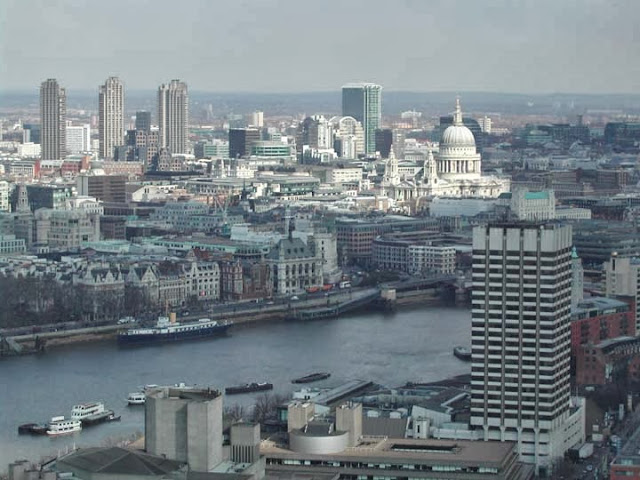Saturday, September 28, 2013
Friday, September 27, 2013
for whom the bell tolls (at 2:50)
Wanna really listen to a song?
We all have our favorite recording artists and the BeeGees were always fav’s of mine.
But the arranger/producer behind the scenes often goes unrecognized. The boys in the booth make a good song truly great.
chrisdautry.com
So let’s listen to the producer’s hand for a change... behind this classic from 1971, “How can you Mend a Broken Heart?”
This was the BeeGee’s first #1 hit single on the Billboard Hot 100 chart.
wiki
It opens with a plucked, sliding bass at :06, then Robin’s trademark trembling vibrato, backed by a plain, acoustic guitar and trilling violins.
robin-hoffmann.com
At :44 listen to how the simple violins and piano introduce the bridge behind their famous birds-on-a-wire vocals beginning about :58.
The sadness builds to crescendo at 1:36, then circles around to the simplicity of the piano and opening vocal again.
There’s a passing 10 second trumpet at 1:46 and you might miss it if you aren’t expecting it.
royerlabs.com
Listen to Maurice’s bass build “bum-bum-bum-bum-bum-bum” to repeat the bridge at 2:41.
A&M Records
And now, the inspired moment in this recording.
gothamcityinsider.com
That one, solitary tolling bell at 2:50 is a gorgeous choice, the gleam of this production I think. It’s like funereal punctuation to the lyrical point of a “broken man” burying his heart.
Just lovely.
At 3:09 the la la la reprise…..
Then at 3:23 a solo flute pirouettes through...
studio914.com
at 3:37, a closing harp arpeggio.
overtone.cc
Then the strings back away, the piano and guitar fade, that opening bass pluck reprises at 3:46 and then finally falls silent on the same vocal vibrato on which we began.
Good song.
Really great production.
BeeGeesarchive
Have a great weekend!
of the times
And the sign says, "Long-haired freaky people need not apply."
So I tucked my hair up under my hat and I went in to ask him why.
He said "You look like a fine, upstanding young man.
I think you'll do."
So I took off my hat and said,
"Imagine that! Huh!... me, workin' for you!"
Woah-oh-oh!
1971, #3 on the Billboard Hot 100
Signs, Signs, Everywhere there's signs.
Blocking out the scenery. Breaking my mind.
Blocking out the scenery. Breaking my mind.
Do this! Don't do that!
Can't you read the signs?
Thursday, September 26, 2013
there’s a nap for that
You can tell a lot about a culture by their productivity.
Algorithms measure working hours and GDP,
“gross domestic product”.
New York GDP leads the United States at 1.358 trillion dollars a year.
Last year USA workers worked 1,790 hours or 34.42 hours per week. We work about 20% of the time.
Paris and London are about the same in GDP at 731 billion.
But the French work only 28.44 hours a week while the Brits need almost 32 hours to produce the same value.
Sydney GDP is tiny, smaller than Atlanta, and they average 33 hours per week to do it, nearly as much as the USA.
But Japan blows us all away.
Their #2 city, Osaka produces a bit less than Los Angeles.
But Tokyo leads the world with $1.9 trillion yearly, almost half again more value every year than in New York.
They must not ever sleep.
Except maybe on the Metro.
Wednesday, September 25, 2013
coitus in corruptus
Artist Michael Sullivan has a penchant for the uncomfortable.
He’s photographed “Blondie”, Deborah Harry, for 1970’s underground/porn magazines.
He’s designed fullsize rubber roach suits for an NBC tv movie.
And he builds puppets that do unspeakable things.
But it was while making a movie about battling robots that this inspiration came to him.
RobotSex.
Needless to say, these sculptures have already been featured at the Museum of Sex on 27th Street.
Of course, no idea is truly original.
austinpowers
Sexy robots have been around for quite awhile.
kungfurodeo.com
Tuesday, September 24, 2013
Monday, September 23, 2013
fountain of youth
Brooklyn financier Frank Bailey was just 21 years old in the year our ClockTower was built.
In the years that followed he became fabulously wealthy and he did a lot for the borough of Brooklyn.
He founded the Museum of NY, he was chairman of the Brooklyn Botanical Garden and he was a trustee for the Brooklyn Institute of Arts and Sciences.
But the splashiest thing he ever did was to fund the Bailey Fountain in Brooklyn’s GrandArmyPlaza.
Commissioned in 1928 for $125,000, that same amount today would yield about $1.7 million dollars.
You can build a very nice fountain for almost 2 million dollars and they did, a full 25 feet high. It's by American artist Eugene Savage.
The fountain was completed in 1932 on a nautical theme that includes Neptune...
and Triton...
and other figures representing “wisdom and felicity.”
Rehabbed in 1956, repatined in 1965 and wholly restored in 2002, today it’s a popular playground for kids and a backdrop for weddings, prom photos and such.
Hanging out downwind on a hot, humid day isn’t so terrible either.
Subscribe to:
Comments (Atom)
































































